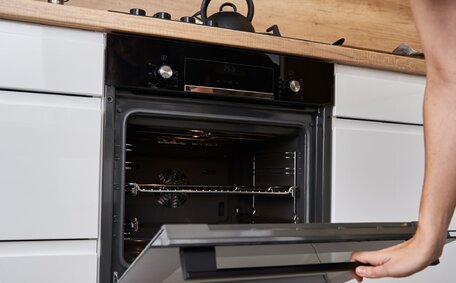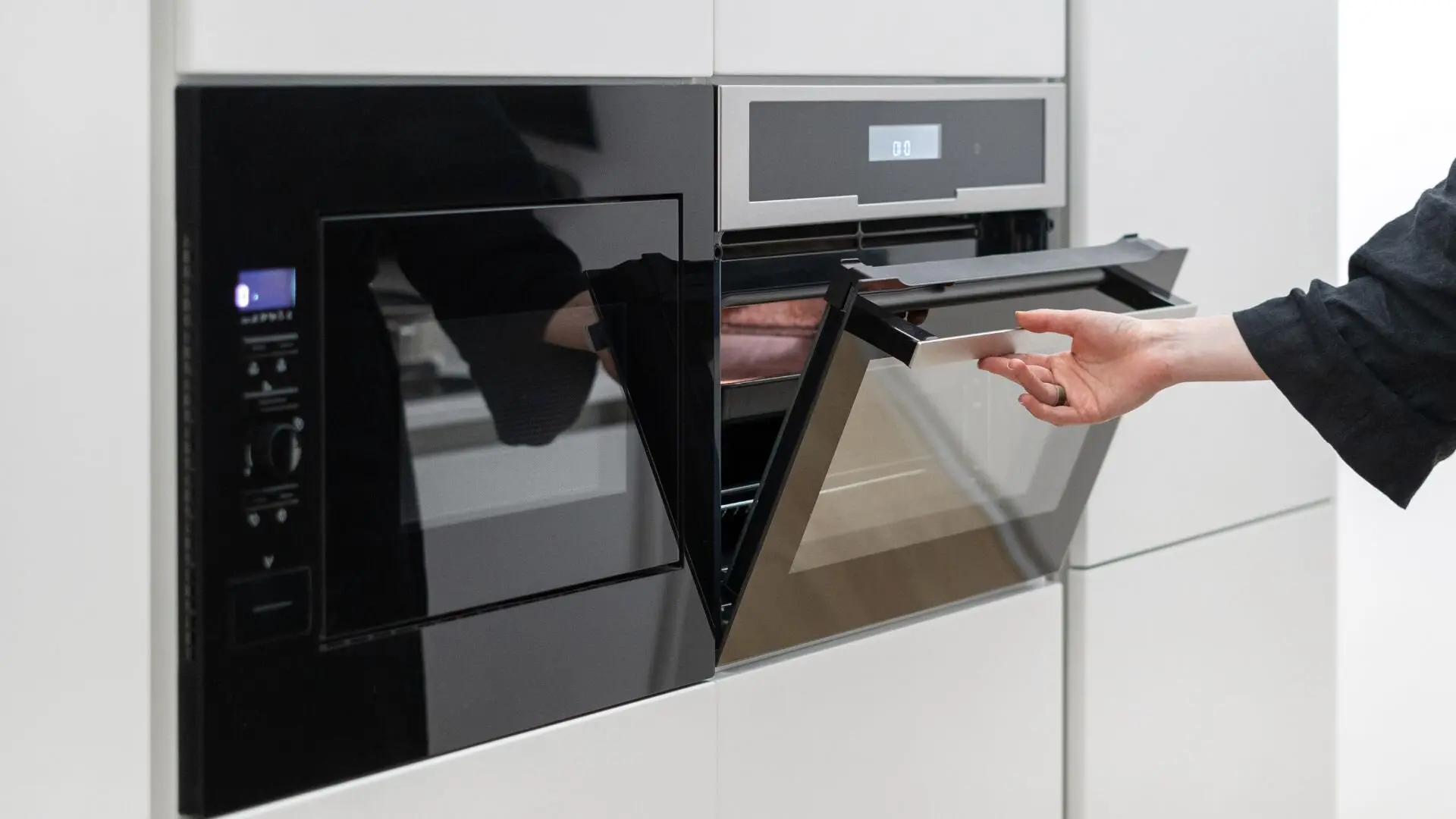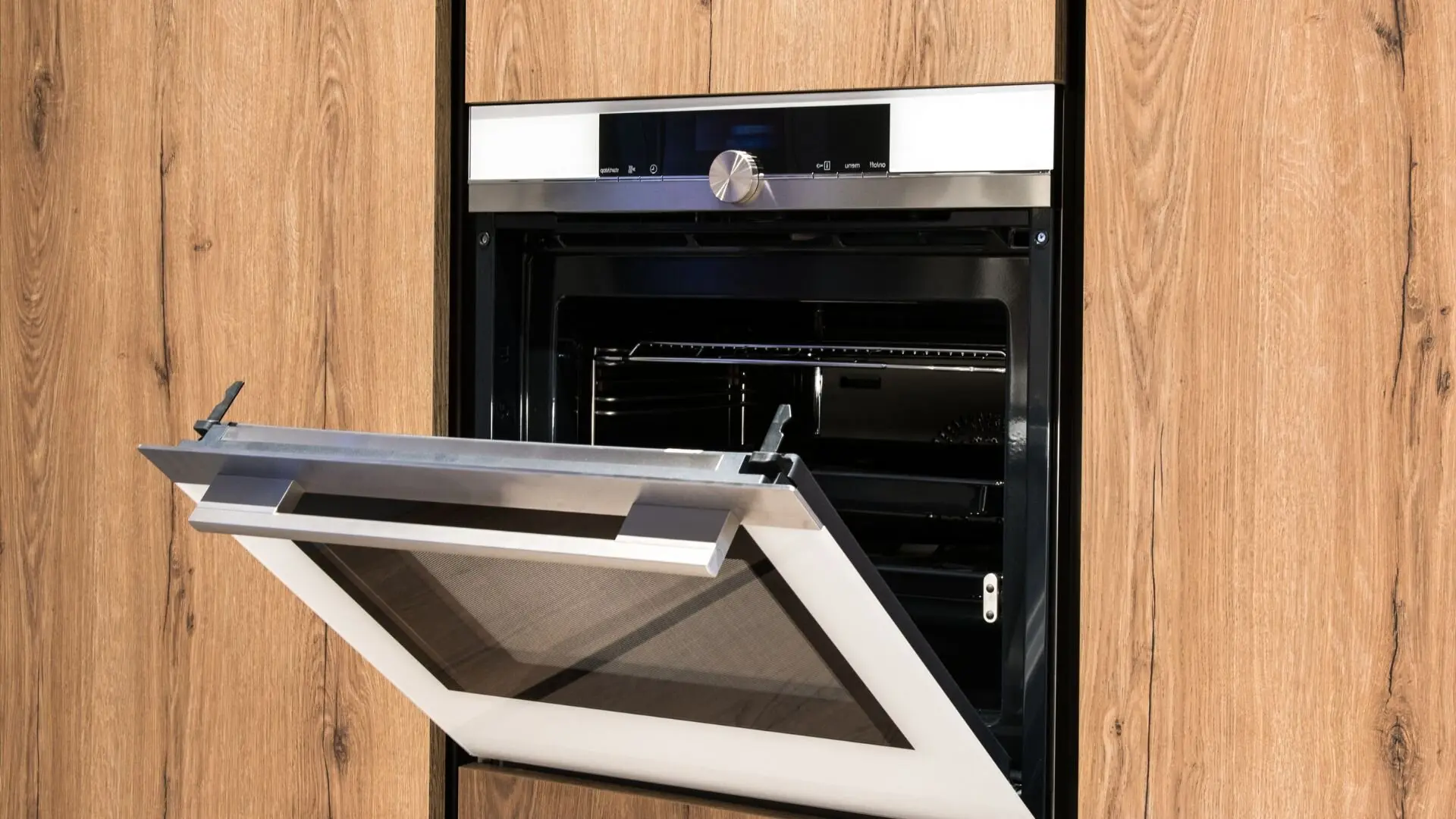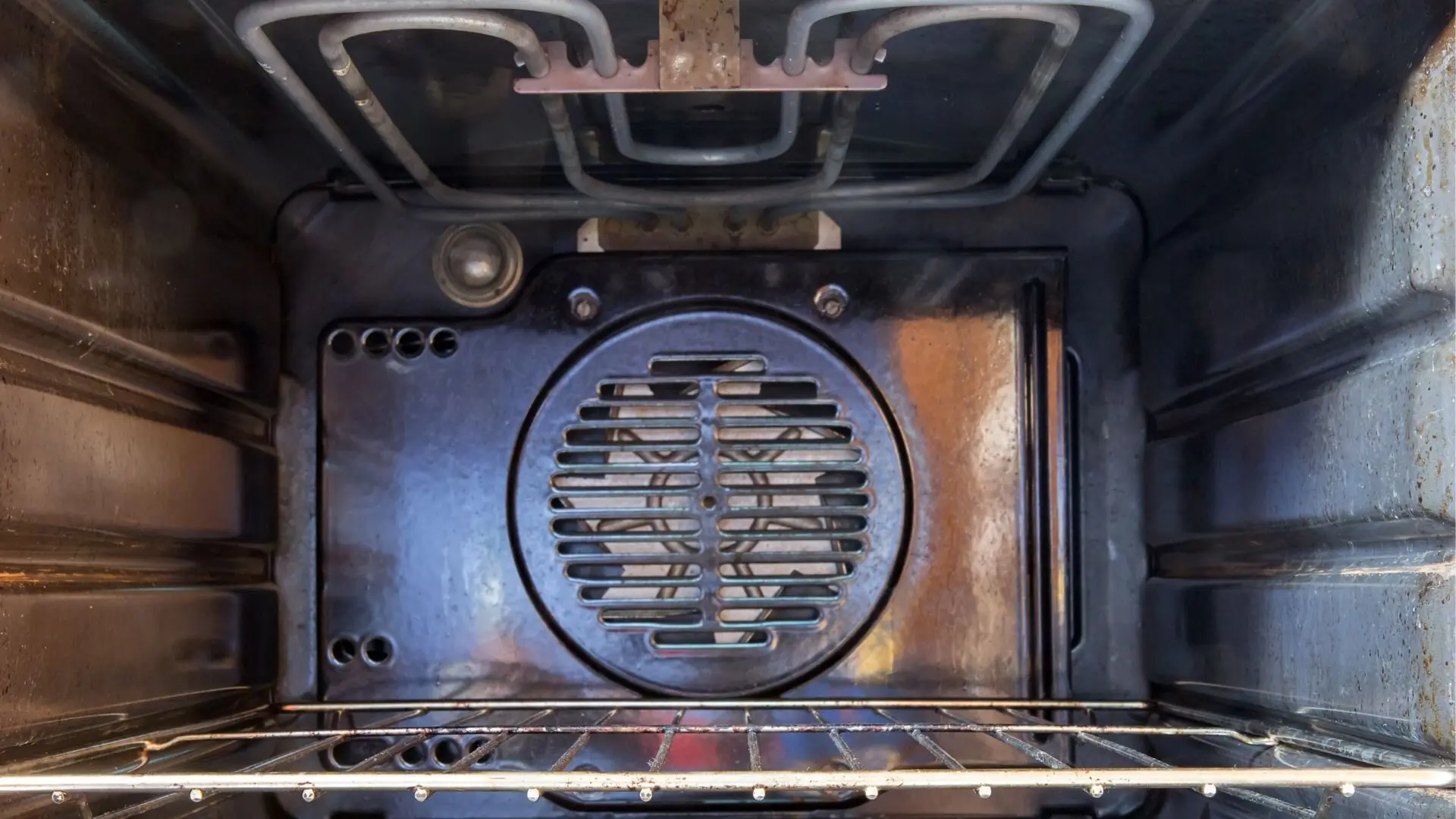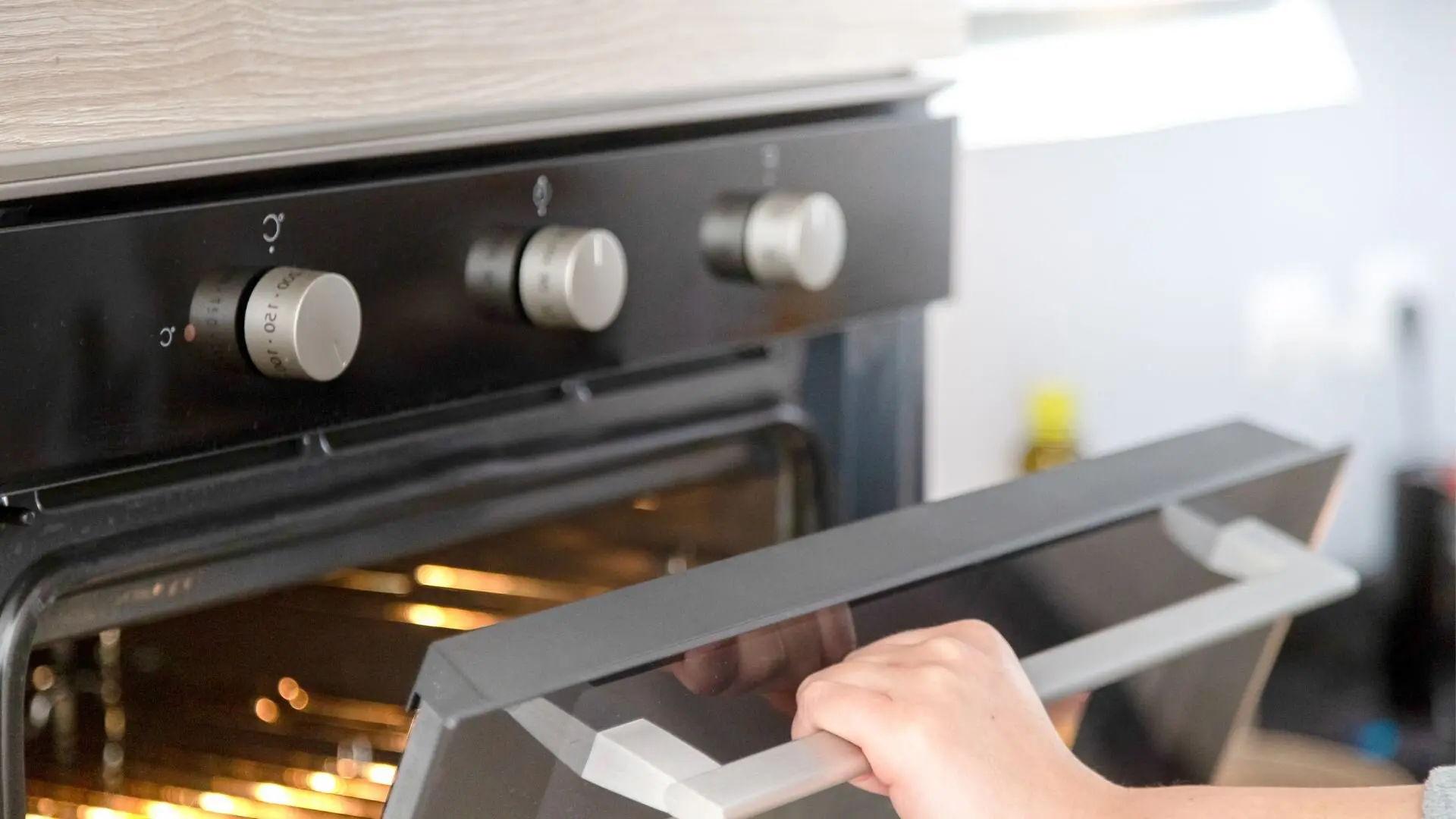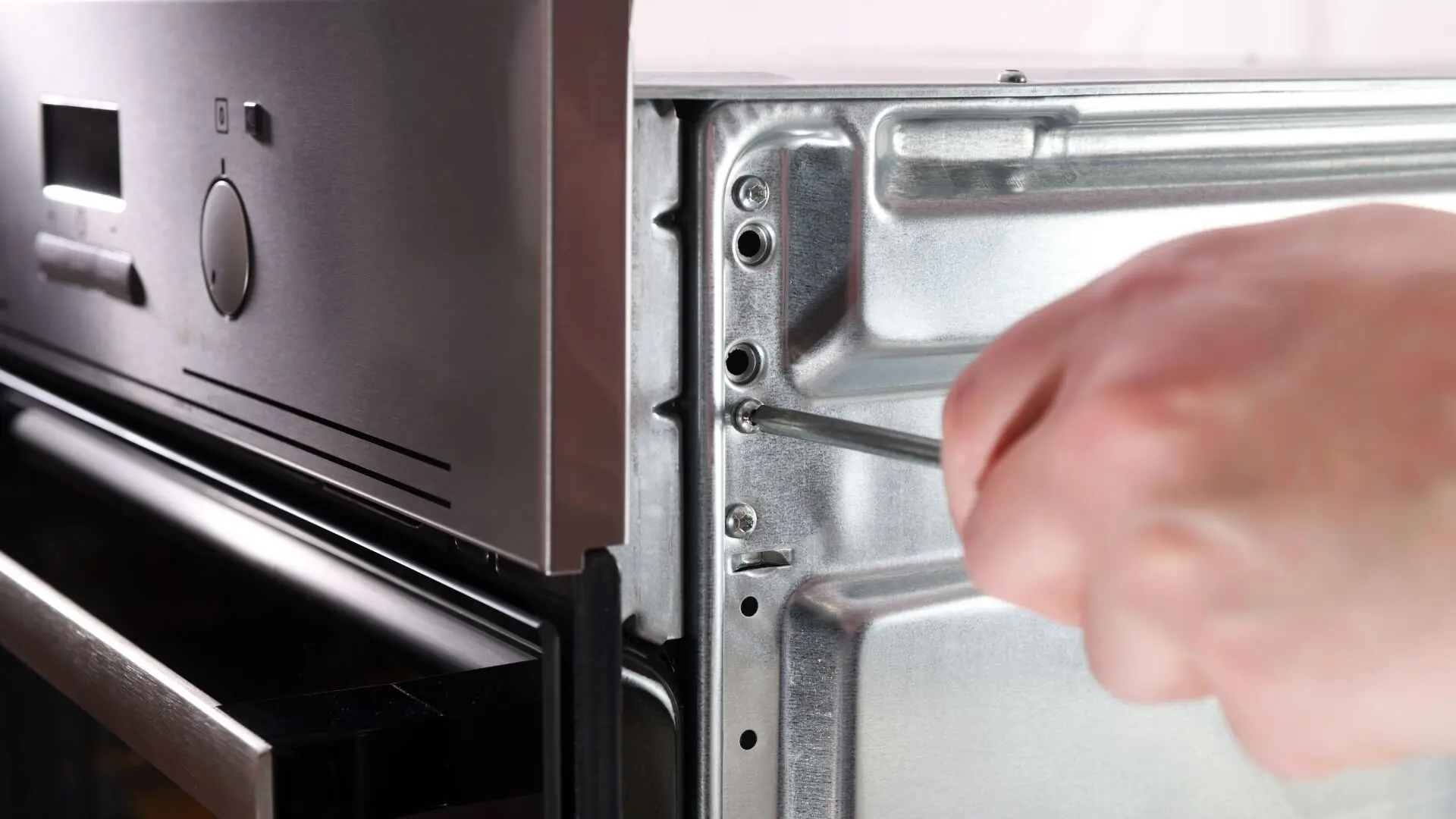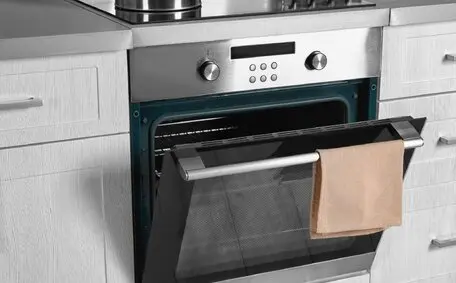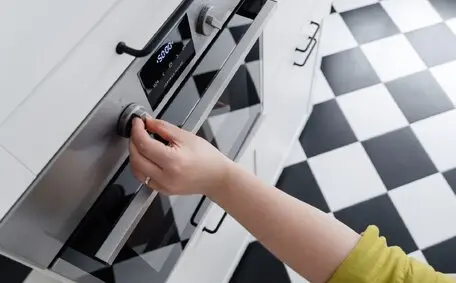Electric ovens are a staple in modern kitchens, crucial for preparing daily meals and exploring culinary creations. This blog delves into the lifespan of these essential household appliances, aiming to provide homeowners with insights on how to maintain their electric ovens to enhance their functionality and longevity.
Electric ovens don’t all last the same length of time. How long they stick around often comes down to how well you take care of them and their build quality. Giving your oven a good clean now and then and following the manufacturer’s guidelines keep everything in working order. Knowing the expected lifespan of key appliances like electric ovens can also help you budget wisely while keeping your kitchen humming efficiently.
In this article, we will explore not only the oven lifespan but also offer maintenance tips that could extend the life of this appliance. Whether you are using a simple electric oven or a more complex gas range, the principles of regular maintenance and proper use apply universally, ensuring that your appliances last as long as possible while reducing the average repair cost.
Understanding Electric Ovens
Electric ovens are go-to appliances in modern kitchens, offering an easy and efficient way to whip up meals. They work by heating electric coils at the top and bottom. These coils send heat through the oven, cooking your food. A thermostat ensures the oven stays at your desired temperature, keeping everything under control.
You generally come across two types of electric ovens: traditional and convection. Traditional ones simply use the heat from the coils, while convection ovens toss in a fan to move hot air around, cutting down cooking time and making sure everything cooks evenly. This trick can mean better efficiency, with food cooking more uniformly and often at lower temps.
![2024 05 Person Opening Electric Wall Oven Person Opening Electric Wall Oven]()
The benefits of using electric ovens in comparison to other types of ovens, like gas stoves, include more stable temperature control, which aids in cooking food more precisely. Electric ovens are also considered safer as they don’t involve combustion gases and are less prone to issues like gas leaks, which can pose a potential fire hazard. They are generally easier to clean and maintain, lacking the burner caps and complex parts found in gas models.
Regular maintenance, including frequently wiping spills and ensuring the oven is clean, can significantly extend the life of an electric oven and prevent common issues such as faulty spark igniters, loose wiring, or the accumulation of grease, which could become a fire hazard. Adhering to the owner’s manual for specific care instructions and using spare parts recommended by the manufacturer also helps keep the oven functioning properly.
For many homeowners, electric ovens are a preferred choice due to their convenience, efficiency, and the advanced cooking options they offer, such as programmable settings and self-cleaning cycles.
Factors Affecting the Lifespan of Electric Ovens
Electric ovens are essential in a modern kitchen, but their lifespan can vary a lot based on a few key factors. Knowing what these are can help you extend your oven’s life, keep it working right, and save on your energy bills and repair costs.
![2024 05 Electric Oven Installed In Wooden Kitchen Electric Oven Installed Wooden Kitchen]()
Usage Frequency
The frequency with which an oven is used can directly impact its longevity. Regular use can lead to wear and tear on components such as door hinges and heating elements. On the flip side, an oven that is consistently used at high temperatures or for prolonged periods may experience quicker degradation of its interior parts. For instance, thermal stress can cause expansion and contraction in heating elements, which, over time, might lead to failure.
Maintenance and Cleaning Habits
Regular maintenance and proper cleaning are paramount in extending the life expectancy of electric ovens. Accumulating food particles and grease can lead to unpleasant burning smells and become a potential fire hazard. Homeowners should regularly clean the interior surfaces and the oven door to prevent such build-up. Additionally, keeping an eye out for warning signs like faulty spark igniters, irregular heating, or loud noises can help catch issues before they necessitate costly repairs or replacements.
Quality of Installation
The initial installation of an electric oven can also influence its operational life. Proper installation according to the manufacturer’s specifications is crucial. This includes ensuring the appliance is level, properly connected and has adequate ventilation. Incorrect installation can lead to issues such as uneven cooking or excessive wear on certain components, reducing the appliance’s overall efficiency and lifespan.
Environmental Conditions
The environment in which the oven operates can also play a significant role. Ovens located in areas with high humidity can suffer from issues like rust or electrical problems due to moisture, which may shorten their lifespan. Conversely, too dry environments might cause static issues or affect electronic controls. Additionally, fluctuations in kitchen temperature can impose additional strain on the oven’s components.
Maintaining an electric oven and paying attention to these factors makes financial sense and ensures the appliance remains a reliable aid in your culinary adventures. Whether it’s preparing simple meals or exploring complex recipes, a well-maintained oven ensures consistent performance and safety.
Following these guidelines will help maintain the average life of your oven, making it a worthy investment for any kitchen.
Maintenance Tips to Extend Your Electric Oven’s Life
Maintaining an electric oven is crucial not only for its performance but also for extending its life expectancy. Proper care can help avoid frequent repairs, reduce average repair costs, and ensure that the appliance operates efficiently. Here are comprehensive maintenance strategies that will help keep your electric oven in top condition.
Proper Cleaning Techniques
Regular Cleaning
Regular cleaning is necessary to keep your oven clean and functioning properly. Food particles and grease can accumulate inside the oven, affecting its efficiency and becoming a potential fire hazard. After use, allow the oven to cool and then wipe down the interior with a damp cloth. For tougher stains, use a mixture of baking soda and water to create a paste, apply it to the stains, and leave it for a few hours before wiping it off.
Deep Cleaning
It’s beneficial to perform a deeper clean every few months. Many electric ovens feature a self-cleaning function that burns off residue at very high temperatures. While this is effective, manually cleaning the oven using oven cleaners or a vinegar and water solution can also be gentle and effective. Ensure the oven is thoroughly rinsed and dried after using any cleaning agents.
Clean the Door
The oven door is crucial for maintaining temperature control and ensuring food cooks correctly. To keep the glass clean, use a glass cleaner or a mixture of vinegar and water. This not only keeps your oven looking good but also maintains heat efficiency.
![2024 05 Inside Electric Oven In Kitchen Electric Oven Kitchen]()
Checking and Replacing Components
Heating Elements and Gaskets
Check the heating elements regularly for signs of wear or damage. They might need to be replaced if they do not glow red or heat unevenly. Similarly, inspect the door gasket for any breaks or leaks. A damaged gasket can lead to heat escaping, which increases energy bills and reduces cooking efficiency.
Check for Faulty Components
Components like the thermostat, timers, and knobs should be checked regularly to ensure they are functioning correctly. A faulty spark igniter or a malfunctioning thermostat can lead to uneven cooking or the oven failing to heat up at all.
Usage Tips to Reduce Wear and Tear
Avoid Overloading
Do not overload the oven with too much food. This leads to uneven cooking and can put extra stress on the heating elements and motor.
Use Appropriate Cookware
Use the right size and type of cookware for your dishes. Incorrect cookware can cause heat to distribute unevenly, putting additional strain on the oven and possibly leading to longer cooking times and higher energy use.
Preventive Maintenance
Schedule an annual check-up with a professional technician. They can help identify and fix any potential issues before they require significant repairs or lead to dryer conditions in the oven.
Temperature Accuracy
Occasionally check the accuracy of the oven’s temperature using an oven thermometer. If there are discrepancies, you might need to recalibrate the thermostat.
Implementing these maintenance tips can significantly increase the average lifespan of your electric oven, ensuring it remains a reliable tool in your kitchen for years. Regular cleaning, timely replacement of parts, and proper usage can all contribute to maintaining your appliance’s optimal performance, ensuring that every meal you prepare is cooked to perfection.
Signs That It’s Time to Replace Your Electric Oven
Electric ovens are an essential part of modern kitchens, providing the means to bake, roast, and broil with ease. However, like all appliances, they have a finite life expectancy. Recognising the signs that your oven needs to be replaced can save you from unexpected breakdowns and high energy bills. Here are key indicators that it might be time to consider getting a new oven.
![2024 05 Testing Oven Turned On Testing Oven Turned]()
Inefficient Heating
Uneven Cooking
If you’ve noticed that your food isn’t cooking correctly or evenly, it could be a sign that your oven’s heating elements aren’t working as they should. This might manifest as undercooked sections of food or having to rotate dishes continually to achieve an even cook.
Failure to Reach Set Temperatures
An oven that struggles to reach or maintain a desired temperature is a clear sign of wear or damage. This could be due to issues with the thermostat, heating elements, or internal wiring. Not only does this affect your cooking quality, but it can also lead to higher energy bills as the oven requires more time or higher settings to cook the same dishes.
Frequent Repairs
If you keep dialing up the technician for repairs, it’s a big sign your oven might be losing steam. Repair bills can stack up fast, so sometimes, getting a new oven makes more financial sense than patching up the old one.
Replacement of Major Components
Some repairs, such as replacing the motor or major electrical components, can be particularly costly. When these issues arise, it’s worth comparing the cost of repairs with the price of a new oven. Often, investing in a newer model can be more cost-effective in the long run.
Changes in Cooking Quality
Longer Cooking Times
As ovens age, they may take longer to cook meals. This inefficiency can be frustrating and may also indicate that your oven can no longer achieve the necessary cooking temperatures.
Noise and Smells
Any new noises, such as buzzing or rattling, or unusual smells, like burning or electrical odours, should not be ignored. These can be signs of electrical problems or failing components, which could pose safety risks.
Additional Considerations
Technological Advancements
Technology in kitchen appliances is continually improving. Newer models often have features promoting energy efficiency and enhanced cooking capabilities, such as induction cooktops or connectivity features. If your current oven is over five years old, upgrading to a newer model means benefiting from modern features that enhance cooking and energy use.
Energy Efficiency
Older ovens generally consume more power than newer models designed to be more energy-efficient. This consideration is especially important as energy prices continue to rise, impacting your monthly bills. A new oven could help reduce your energy bill significantly.
Recognising these signs and deciding to replace your old oven can lead to better cooking experiences, lower energy costs, and fewer disruptions due to breakdowns. If these signs are becoming more apparent, consider shopping for a replacement, ensuring you choose an oven that meets your current and future cooking needs.
Comparing Electric Ovens with Other Types
When choosing the right oven or cooktop for your kitchen, it’s crucial to understand how different types compare in terms of functionality, cost, and suitability for your cooking needs. This section explores how electric ovens stack up against gas ovens, induction cooktops, microwave ovens, and hybrid options.
![2024 05 Installing Electric Oven Installing Electric Oven]()
Gas Ovens
An electric oven and gas stove serve similar functions but differ significantly in operation and user experience. Cost is a primary consideration; generally, gas ovens have a lower average repair cost compared to electric ones, which can influence long-term financial planning.
Heat distribution in gas ovens is more immediate and allows for quicker temperature adjustments, making them preferred by professional chefs. However, they require specific installation requirements, such as a gas line, which might only be feasible in some homes.
Induction Cooktops
Induction cooktops represent a modern technology that uses electromagnetic fields to heat pots and pans directly, offering greater energy efficiency and reduced cooking times compared to traditional electric ovens. These cooktops are safer, as they do not generate heat unless in contact with induction-compatible cookware, and they cool down quickly. Energy efficiency also means a potential reduction in the water bill since less energy is wasted when heating the appliance itself.
Microwave Ovens
Microwave ovens and traditional electric ovens cater to different cooking methods. Microwaves are ideal for reheating food and quick cooking, whereas electric ovens are suited for more complex cooking tasks that require even heat distribution, such as baking or roasting. Each appliance has a place in the modern kitchen, with microwaves often serving as a complementary technology rather than a replacement for a full-sized oven.
Hybrid Options
Hybrid appliances combine the best of various technologies. For example, a range might feature an induction cooktop above and an electric oven below, offering versatility and efficiency. This combination can be particularly beneficial for those who appreciate the quick heating of induction cooktops but also need the conventional baking capabilities of an electric oven. These options are ideal for users looking for multifunctional appliances that cater to diverse cooking styles.
Considerations Across Types
When you weigh up these options, think about how long they’ll last, which can change based on how you use and maintain them. Regular cleaning and getting repairs done when needed is key for any appliance to last and perform well. Take a tip from the laundry room—keeping the lint filter clean in your dryer can dodge fires, protecting your kitchen gear from potential fire dangers.
Each type of oven or cooktop has its particular strengths, and the best choice depends on your specific cooking needs, kitchen layout, and budget. Understanding these differences can help ensure that you select an appliance that meets your culinary requirements and offers the best value and efficiency over its lifespan.
Financial Implications of Electric Ovens
Understanding the financial implications of purchasing and maintaining an electric oven can help homeowners make informed decisions. This section explores the various costs associated with electric ovens, from purchase to maintenance, and the long-term value they offer.
Purchase Price Variability
The cost of electric ovens varies widely, influenced by features, brand reputation, and technology. Basic models might be affordable, but high-end ovens with advanced features such as self-cleaning capabilities, convection options, and smart technology are more costly. The initial investment can reflect the oven’s quality and potential life expectancy, which can vary significantly depending on the brand and model.
Energy Consumption
The impact of an oven’s energy efficiency on household energy expenses is considerable. While possibly more expensive upfront, more energy-efficient models can lead to lower electricity bills over time. Homeowners should consider models with high energy ratings, as these typically use energy more efficiently, reducing costs over the oven’s average lifespan. For example, choosing an oven that uses cold water for steam cleaning can be more energy-efficient than models that require higher temperatures.
Maintenance and Repair Expenses
The costs associated with maintaining and repairing electric ovens can vary. Regular maintenance, such as cleaning and checking the integrity of components, can help avoid breakdowns that require costly repairs. The average repair cost depends on the issue, but maintaining an oven well can significantly extend its lifespan and functionality. For instance, replacing worn-out seals or a malfunctioning motor can prevent more serious problems later.
Overall Value
Choosing a quality electric oven is a balance between initial costs and potential long-term savings. A durable, energy-efficient model might have a higher purchase price but can offer greater savings in terms of reduced repair needs and lower energy consumption. The long-term economic benefits also include the potential to avoid the need for premature replacement. For example, an electric oven with a robust design and replaceable components can last well beyond the average lifespan of less durable models.
When evaluating an electric oven, it is essential to consider the purchase price and the ongoing costs of energy consumption and maintenance. Understanding these financial aspects can lead to a decision that offers the best overall value, ensuring the oven serves efficiently for many years.
Keeping Your Oven in Peak Condition
Electric ovens are significant investments, and their performance can be greatly enhanced through regular maintenance and timely repairs. Understanding the signs of wear—such as uneven heating or unusual noises—can help prevent more severe issues. For instance, replacing faulty elements or addressing minor repairs swiftly can extend the appliance’s functionality and avoid costly breakdowns.
Bright Force Electrical stands as a trusted partner for both the installation and maintenance of electric ovens. Our team of experts ensures that your oven operates at its best, safeguarding your investment over its lifespan. We provide comprehensive services that include routine checks and addressing any issues that may arise, from simple part replacements to more complex repairs.
Schedule a consultation with us today and ensure your oven remains a dependable part of your kitchen ensemble.
